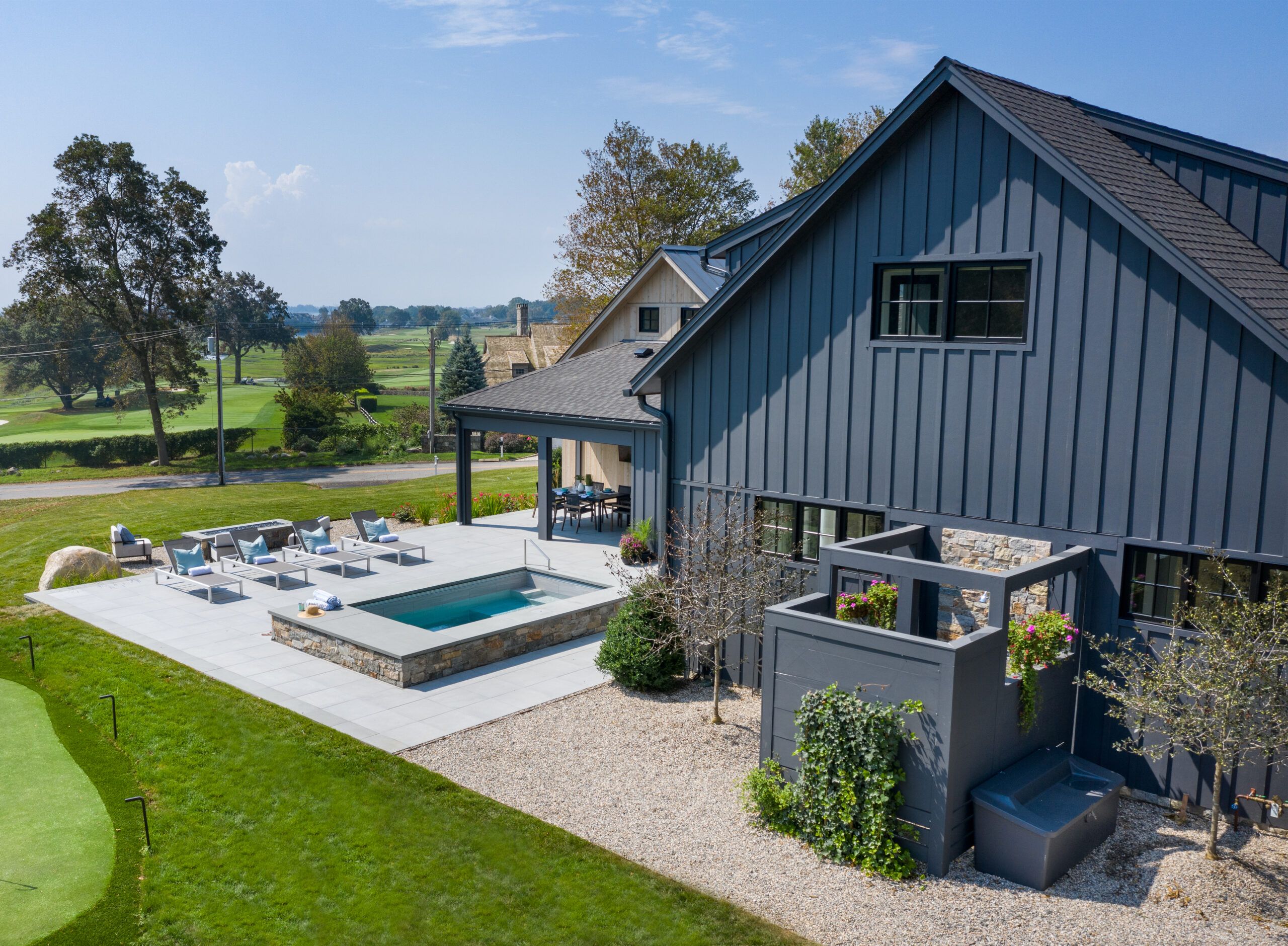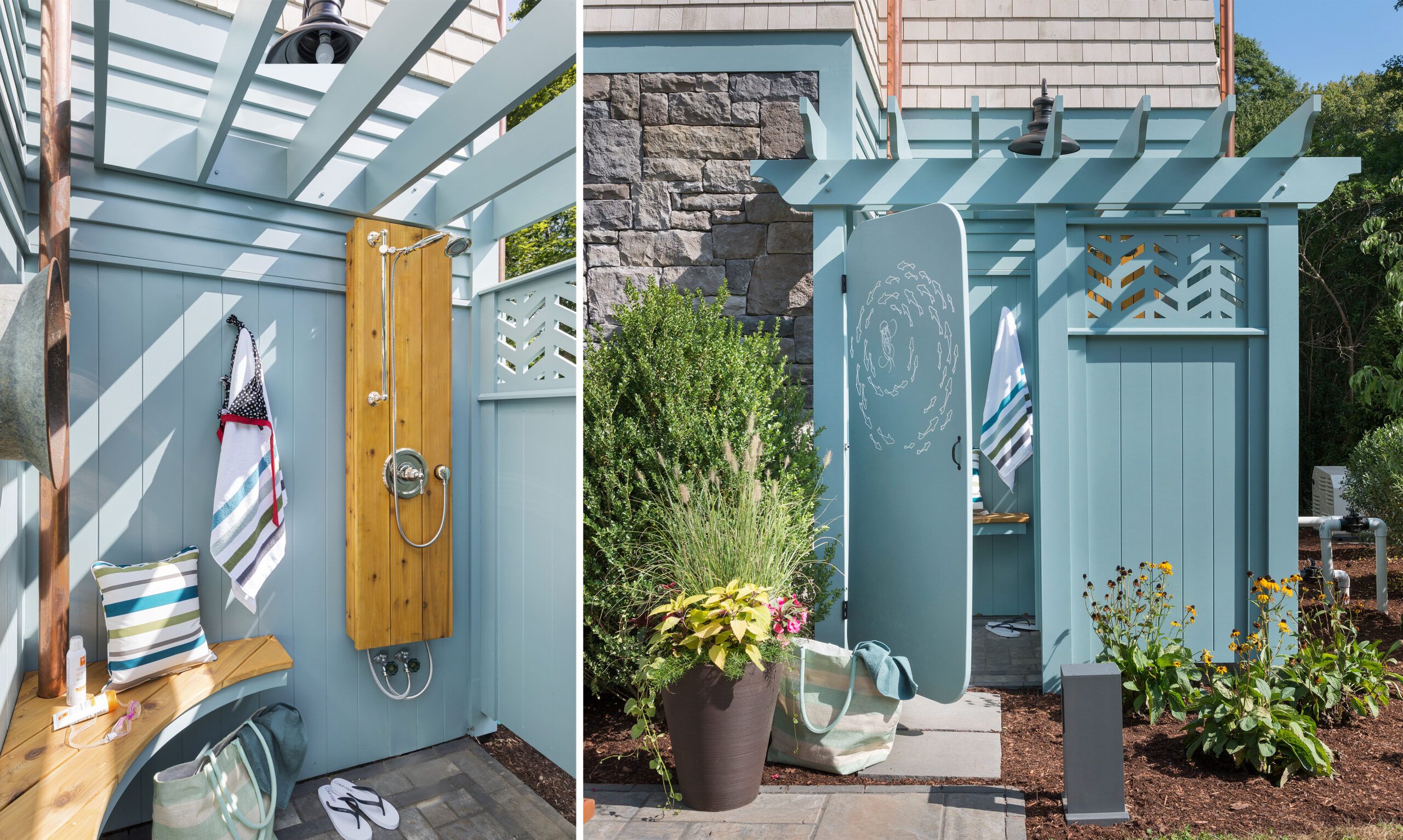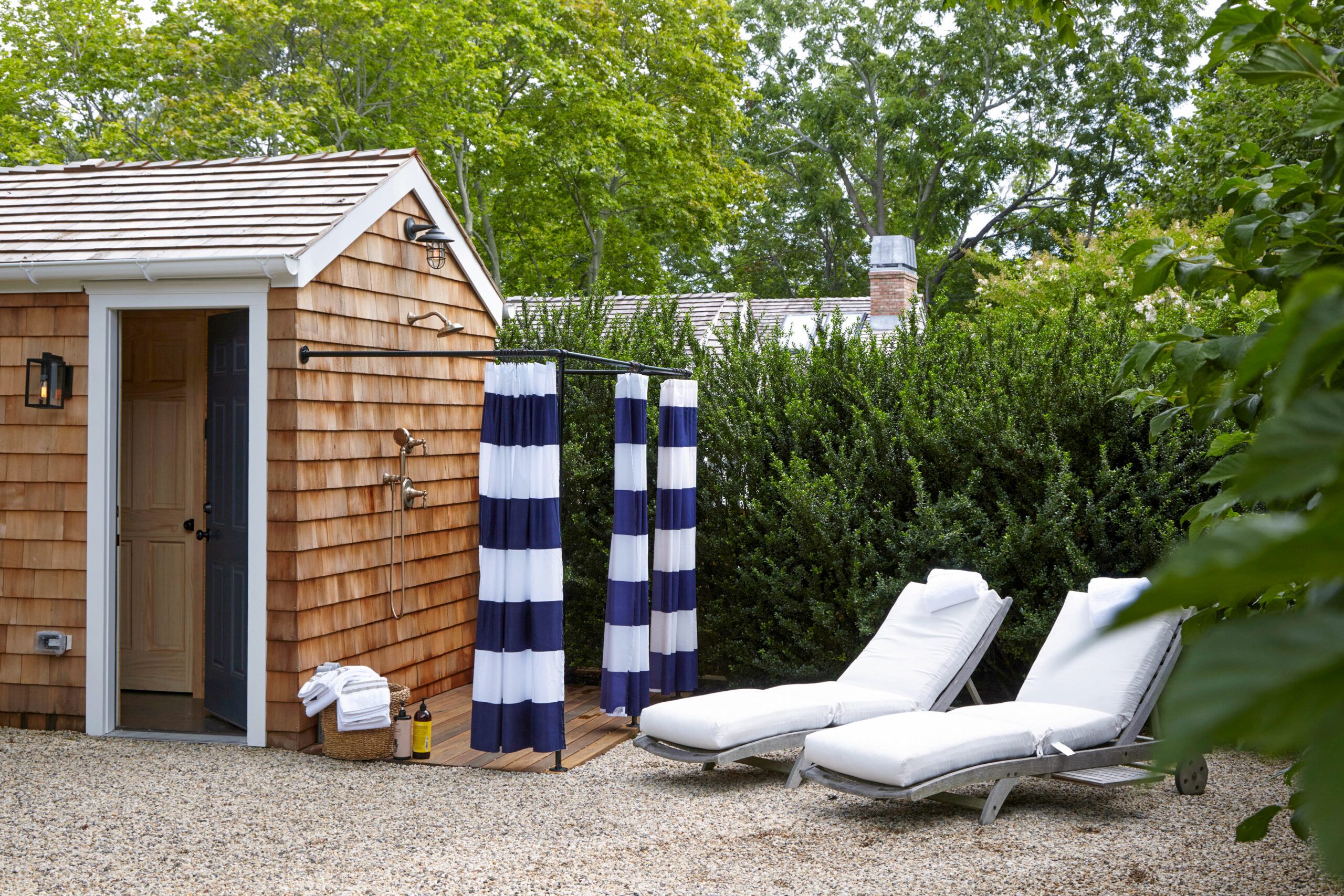Whether you’re rinsing off after a dip in the pool, cleaning up after gardening, or just enjoying the experience of bathing in nature, an outdoor shower is a valuable addition to your home. This guide explores everything you need to know about outdoor showers, from design considerations to installation and maintenance.
Why Install an Outdoor Shower?
Outdoor showers can serve multiple purposes. They provide a convenient way to rinse off sand, chlorine, or dirt before entering your home, keeping your indoor spaces cleaner. For gardeners, they offer a spot to wash up after tending to plants. Athletes and active families appreciate having a place to clean off after outdoor activities.
Beyond practicality, outdoor showers offer a luxurious, spa-like experience. Architect Howard Backen, who enjoys his outdoor shower in California’s Napa Valley, describes it as, “invigorating when it’s cold, interesting when it’s rainy, and incredibly refreshing when it’s sunny and hot.”
Choosing the Perfect Location for Your Outdoor Shower

Picking the right spot can enhance your outdoor shower’s form and function. Consider placing it near areas where it will be most useful, such as by the pool, close to the garden, or near the back door for easy access after outdoor activities.
Considering Plumbing Access
You can make your installation easier and less expensive by choosing a spot near existing plumbing. A shower on a deck near the kitchen or bathroom allows you to tap into existing hot and cold water lines. In a more remote location, such as a secluded spot among trees, be prepared for the additional work and expense of installing new outdoor plumbing.
Balancing Privacy and Views
Privacy is a key consideration for most homeowners planning an outdoor shower. But you may also want to take advantage of beautiful views or natural surroundings. Consider using natural elements such as trees or hedges for privacy, or incorporate design elements such as screens or partial walls so you have coverage but can still enjoy the outdoor setting. Keep in mind that if trees are deciduous, you may have to wait until late spring for sufficient cover.
Types of Outdoor Showers
Outdoor showers come in a range of styles to suit different needs and budgets. The most basic outdoor showers are simple rinse stations. These typically consist of a showerhead attached to an existing outdoor faucet or spigot. They’re perfect for quick rinses after swimming or gardening and are relatively easy and inexpensive to install. While they usually only provide cold water, they’re highly practical for many homeowners.
Fully equipped outdoor shower enclosures are at the other end of the spectrum. These can include hot and cold water, custom-built enclosures for privacy, and even changing areas. They offer a more complete bathing experience, and you can design them to complement your home’s architecture and landscape.
Essential Components of an Outdoor Shower
Regardless of the type of outdoor shower you choose, certain components are essential for functionality and durability.
Plumbing Considerations for Outdoor Showers
Hook up an outdoor shower much like you would an indoor shower. If you want both hot and cold water, This Old House plumbing and heating expert Richard Trethewey recommends adding a pressure-balance valve to prevent scalding.
“And for those who live in four-season climates, by far the biggest concern is having the ability to drain pipes when the temperature drops,” says Trethewey. Water trapped inside can freeze and crack the pipes.
An exposed riser and a shower head that both unscrew will help eliminate every drop of water. Place shutoff valves in the house with pipes traveling on a downward slope.
Drainage Solutions
Local building codes may dictate how you can dispose of gray water from your shower. For the most part, outdoor showers simply drain into the ground. You can build a dry well—an earthen pit lined with landscape fabric and filled with gravel—under the shower floor to help disperse water flow. Some cities or states may require routing wastewater into the sewer system.
Room to Dry
To prevent mold and mildew, be sure your shower is well-ventilated. It needs to dry completely after every use. Secure walls to corner posts and elevate them about a foot off the ground to promote air circulation. If you decide to add a solid roof, attach it only to the posts and leave open space above the walls. Installing your shower in a sunny location will also help it stay dry.
Weather-Resistant Materials
You can extend the lifespan of your shower by choosing materials to withstand outdoor conditions. For enclosures, consider pressure-treated wood, cedar, teak, or Brazilian ironwood. These materials hold up well outdoors, although they may require periodic treatment to prevent mildew and fading. When buying imported wood, look for FSC (Forest Stewardship Council) certification, which means the boards were sustainably harvested.
Designing Your Outdoor Shower

The design of your outdoor shower can range from minimalist to luxurious, depending on your preferences and budget. Consider the following elements when planning your design.
Shower Enclosure Options
Enclosures provide privacy and can also be a key design element. Options range from simple folding screens to custom-built structures. For an outdoor shower on the rooftop of a client’s home in Washington, D.C., architect Kai Tong designed a roll-up bamboo screen that’s high enough for a shield but low enough not to block dramatic views of the capital.
Outdoor Shower Flooring Choices
The floor of your outdoor shower should be comfortable underfoot and able to withstand constant water exposure. Wood decking material is a popular choice but requires regular maintenance to prevent mildew and fading. Stone floors, such as bluestone or tumbled river rock, offer durability and a natural look. Consider adding a slatted teak mat over the drain area for added comfort.
Shower Fixture Selection
The right shower fixtures can enhance your outdoor shower. For example, you might choose a large rain-style showerhead for a luxurious experience that mimics showering in nature. Bronze and copper fixtures are beautiful because they develop a natural patina as they age. Brass also works well, but avoid anything too shiny because the gloss will fade. In seaside locations where salty air can pit most metals, corrosion-resistant stainless steel with a 304 rating is typically our top choice.
Outdoor Shower Installation Process: DIY vs. Professional
Installing an outdoor shower can be a fun DIY project for those with plumbing experience, but many homeowners prefer to hire professionals for a seamless installation.
DIY Shower Installation Steps
If you’re handy and have some plumbing knowledge, installing a basic outdoor shower can be a rewarding DIY project. Here’s a general outline of the process:
- Plan your layout and gather materials.
- Check local building codes and obtain necessary permits.
- Install plumbing lines and drainage system.
- Build the shower base and enclosure.
- Install the shower fixtures.
- Test the system for leaks and proper drainage.
When To Hire a Professional
We recommend hiring a professional for more complex installations, especially those involving hot water lines or custom enclosures. It may be worth it to spend on a professional plumber that can properly install water lines and drainage systems, or a general contractor can handle enclosure construction and electrical work for lighting or heating elements.
Maintaining Your Outdoor Shower
Proper maintenance is key to ensuring your outdoor shower remains functional and attractive.
Seasonal Shower Maintenance Tips
Regular maintenance helps prevent issues and keeps your shower looking its best. Here are our tips:
- Clean fixtures regularly with warm, soapy water
- Clean stone or tile surfaces regularly to prevent algae growth
- Inspect and clean the drain to ensure proper water flow
- Periodically check for leaks and repair promptly
- Treat wood enclosures annually to prevent weathering
Winterizing Your Outdoor Shower
In colder climates, you’ll need to winterize your outdoor shower to prevent damage from freezing temperatures. Follow these steps:
- Turn off the water supply and drain all pipes.
- Remove and store removable fixtures indoors.
- Cover the shower area to protect it from snow and ice.
- For permanent structures, consider using heat tape on pipes.
Enhancing Your Outdoor Shower Experience
Once you have the basics in place, consider adding elements to improve your outdoor shower experience.
Luxurious Shower Add-Ons
Elevate your outdoor shower with these luxurious additions:
- Built-in seating for comfort
- Heated towel racks for chilly days
- Low-voltage lighting for evening showers
- Outdoor speakers for music
- Storage niches for toiletries and towels
Eco-Friendly Options for Outdoor Showers
Make your outdoor shower more environmentally friendly with these options:
- Gray water recycling system for garden irrigation
- Low-flow showerheads to conserve water
- Natural, biodegradable soaps and shampoos
- Solar-powered water heater for hot water
Cost Considerations for Outdoor Showers
The cost of an outdoor shower can vary widely—from hundreds of dollars to tens of thousands—depending on its complexity and features. A simple cold-water rinse station may be the best option for those on a tight budget. This typically includes a basic showerhead connected to an existing outdoor faucet.
Homeowners seeking a balance between functionality and luxury might opt for midrange outdoor showers, which often feature hot and cold water, durable materials, and a semi-private enclosure. These showers provide a satisfying outdoor bathing experience without the high-end price tag. The most expensive options include luxury outdoor showers with hot and cold water, custom enclosures, and luxury fixtures.
In all cases, professional installation will cost more than doing it yourself. If you’re deciding between options, we recommend getting quotes from multiple professional contractors to compare.

